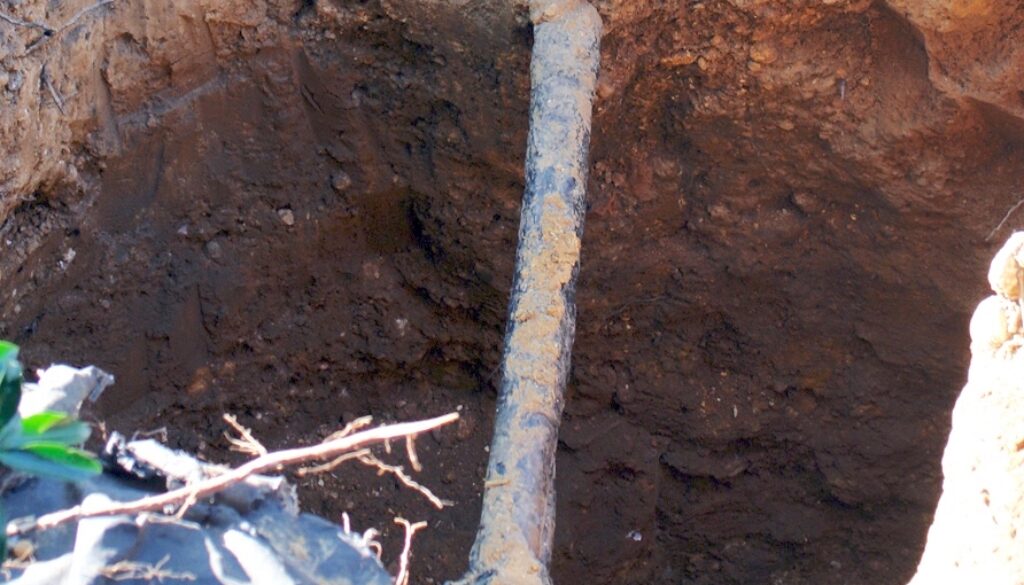EPA’s proposed lead pipe crackdown spurs debate
Proposed revisions to a national drinking water regulation designed to reduce exposure to lead in US drinking water are drawing applause from many sectors, but also criticism as industry groups worry about how to meet the stricter standard and environmental and health advocates fear the proposed requirements don’t go far enough.
The regulatory move comes after public outcry in response to recognition that communities around the country could be at risk of the type of contamination that occurred in Flint, Michigan in 2014 when the town’s drinking water became contaminated with lead from corroded pipes. The toxic metal, which is a known health hazard, particularly to children, has also been found in the tap water of Chicago residents.
“Now, there’s a new proposed rule, there’s lots of money, and there is a deadline, so now people are mobilizing to implement,” said Alfredo Gomez, director of Natural Resources and Environment at the US Government Accountability Office (GAO). But, he said, “some folks are supportive of the proposed rule, and others are concerned.”
The US Environmental Protection Agency (EPA)’s proposed changes would require water systems to replace lead service lines within 10 years of the rule going into effect. An estimated 9.2 million water service lines provide water to communities across the nation. The agency would also compel utilities to take stronger measures to prevent lead in the pipes from entering the water through corrosion by reducing the level at which utilities are required to take mitigation action for lead from 15 parts per billion (ppb) to 10 ppb. The EPA action builds on revised regulations introduced in 2021.
The new move to address lead in drinking water, which the EPA proposed in late November, is among a host of actions the agency has recently taken to crack down on a wide range of harmful environmental pollutants. The agency issued an enforcement alert in late 2023 calling out “widespread noncompliance” with the first US regulation on toxic coal ash, and earlier this month it announced a proposal that would help ensure cleanups of pervasive chemicals known as PFAS at hazardous waste facilities. Last week, the EPA finalized stronger air quality standards to reduce soot pollution.
Lead is a powerful neurotoxin that can lead to brain damage, learning disabilities and mental health problems even at low levels of exposure. Children, especially Black children and those in living in low-costs housing units where older pipes are in place, are at especially high risk of lead exposure, which they are most likely to encounter through the water they drink. Low concentrations in blood have been linked to lower intelligence and learning problems in children.
As well, the EPA’s latest assessment of lead’s health risks, released in January, offers heightened evidence for a link between lead exposure and risk for high blood pressure and deaths related to heart problems.
Debating the details
The agency took public comments on its new lead proposal through Feb. 5, attracting more than 200,000 submissions.
Many applauded the agency’s effort to tackle this longstanding public health danger.
“Replacing lead pipes, as required by this rule, will lead to tremendous benefits for the children most impacted by lead exposure in communities of color and impoverished communities across America,” the group First Focus on Children wrote in its submission to agency. “This regulation requires that water systems prioritize replacements for those who are disproportionately impacted by lead exposure, meaning that these historically excluded communities will see positive health impacts quickly.”
But many others said the EPA’s proposed revisions to the lead and copper rule would simply place too much of a burden on state resources. The Association of State Drinking Water Administrators (ASDWA), a professional group for state drinking water programs, warned the EPA in a comment filed to the agency docket that implementing the rule would require over five million staff hours, translating to over $300 million a year. States will struggle to shoulder such costs on top of upcoming regulations on toxic per- and polyfluoroalkyl substances (PFAS), which contaminate water systems across the country, as well as other responsibilities, the ASDWA said.
Other groups expressed similar concerns, telling the EPA that the 10-year timeframe for replacing lead pipes won’t be financially feasible for old, small and/or economically disadvantaged communities. Direct grants to communities will be required to help pay for the work, some argue.
“New Orleans is a 300-year-old city, and like many older cities, is simultaneously grappling with the impacts of climate change as well as aging infrastructure,” the Sewerage and Water Board of New Orleans wrote in its comments filed to the EPA. “We believe direct grants will be required to fund lead service line removals necessary to achieve compliance while avoiding extreme rate increases for our customers.”
The New Mexico Environment Department warned the EPA in its comments that it would have to triple or quadruple its staff resources to comply with the rule.
And Yvonne Flowers, the mayor of Poughkeepsie, New York, told the agency in her comments that the proposed policy would result in “unacceptable costs on our taxpayers,” without an overhaul. “As a small city, the costs and scope of lead service remediation make it clear we cannot tax or borrow our way into a 10-year compliance window, however well-intended the policy mandate,” she added.
30 years of inaction
Water systems should not be surprised by the EPA’s proposed lead actions, according to Ronnie Levin, an environmental health instructor at the Harvard T.H. Chan School of Public Health and a former long-time scientist at the EPA. Levin has been pushing the agency to reduce lead limits in drinking water for 40 years.
“Every couple of years, EPA re-issues a call to water utilities and states to do some kind of an inventory to assess the problem they have,” Levin said in an interview. “They’ve basically done not very much in 30 years.”
The EPA’s less-stringent 2021 lead and copper rule revision could generate $9 billion in yearly health benefits, according to a study Levin authored that was published last spring. Levin has not calculated the cost benefits of the EPA’s more recent proposal.
“It’s just a matter of making it a priority,” said Levin. “What the water utilities are asking for is they want all of this to happen at no cost or interruption to themselves and that’s what’s not possible.”
The EPA estimates that replacing lead pipes within 10 years is feasible for 96-99% of community water systems in the US, noting that some large water systems already have replaced their service lines, including in Tucson, Arizona; Spokane, Washington; and Newark, New Jersey.
“Congress has appropriated lots of money to lead service line replacement,” said the GAO’s Gomez. “The biggest chunk is from the infrastructure law, where they’ve appropriated $15 billion in grants through the EPA Drinking Water State Revolving Fund, and then there’s a couple of other grant programs that are also available.”
Not going far enough
Several health and environmental groups say the EPA proposal does not go far enough, and urged the agency in their comments to reduce the action level to 5 ppb, or even a level of 0 ppb.
Attorneys general from 13 Democrat-led states and DC have expressed concern that a loophole in the proposed rule could leave some cities with lead water pipes for decades to come, calling out a provision that gives flexibility for systems with many lead pipes.
Some groups also shared fears that abandoned sections of lead pipes could remain in the ground if not directly addressed by the EPA, potentially contaminating the soil and groundwater, and that lead service lines could be replaced with pipes made from polyvinyl chloride (PVC) or chlorinated polyvinyl chloride (CPVC). The EPA has classified vinyl chloride, the toxic gas notoriously released in East Palestine, Ohio when a trail derailed last February, as a known human carcinogen.
Amid the debate over details, the Flint, Michigan Branch of the National Association for the Advancement of Colored People (NAACP), urged the EPA to move forward despite the costs and concerns.
“As residents of Flint, we can assure you that there is no dollar amount that could compare to the cost of human life or the irreversible harm caused by lead exposure,” the NAACP wrote in its comments to the EPA. “In environmental justice communities all across the country, there are people who depend on the government to put forward rules that truly protect our health and well-being no matter the cost.”
Water systems are required to provide an inventory detailing the locations of their lead service lines by October 16, 2024, by which date the EPA expects to have finalized the proposed rule.
(Featured image: A lead service line is replaced in Washington, DC. Photo by By IntangibleArts, CC BY 2.0 via Wikipedia.)
 EWG
EWG


